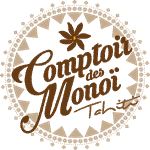
| Vanilla | |
|
Originally from Manila, vanilla was introduced in Tahiti in 1848, the first plants belonging to the species Vanilla aromatica. Later on, other varieties such as Vanilla fragrans and Vanilla The vanilla culture did not really start until 1880. Nowadays, the species Vanilla aromatic and Vanilla pompona have almost disappeared from the territory. Any vanilla comes from 2 species, Vanilla fragrans and Vanilla tahitensis, the latter has acclimated so well to the island that it has acquired a distinctive taste, which is now one of the best vanilla in the world. |
This is one of the most popular spices, and therefore a luxury. Its sweet and captivating scent interested the greatest perfumers. More recently, it was introduced in cosmetics, bringing |
|
CULTIVATION Vanilla tahitensis is a demanding orchid, requiring the development of simple cultivation methods but extremely accurate. Flowering for one day only, the marriage must be conducted in the early hours of the day, and requires the use of an abudant and applied labor. The fruit produces, after a 9 months maturation period, a green vanilla pods ready to be collected. Then there is a slow drying time in the sun that will reveal after three months all the vanilla aroma and richness.
|
USES Cosmetic uses Widely used in cosmetics, vanilla nourishes, soothes and regenerates the skin. Vanilla is often used as a basic note in perfumery. The famous Coco Chanel or Guerlain’s Shalimar are examples of perfumes with vanilla notes. Food uses Without sugar, vanilla is used in all types of food |




